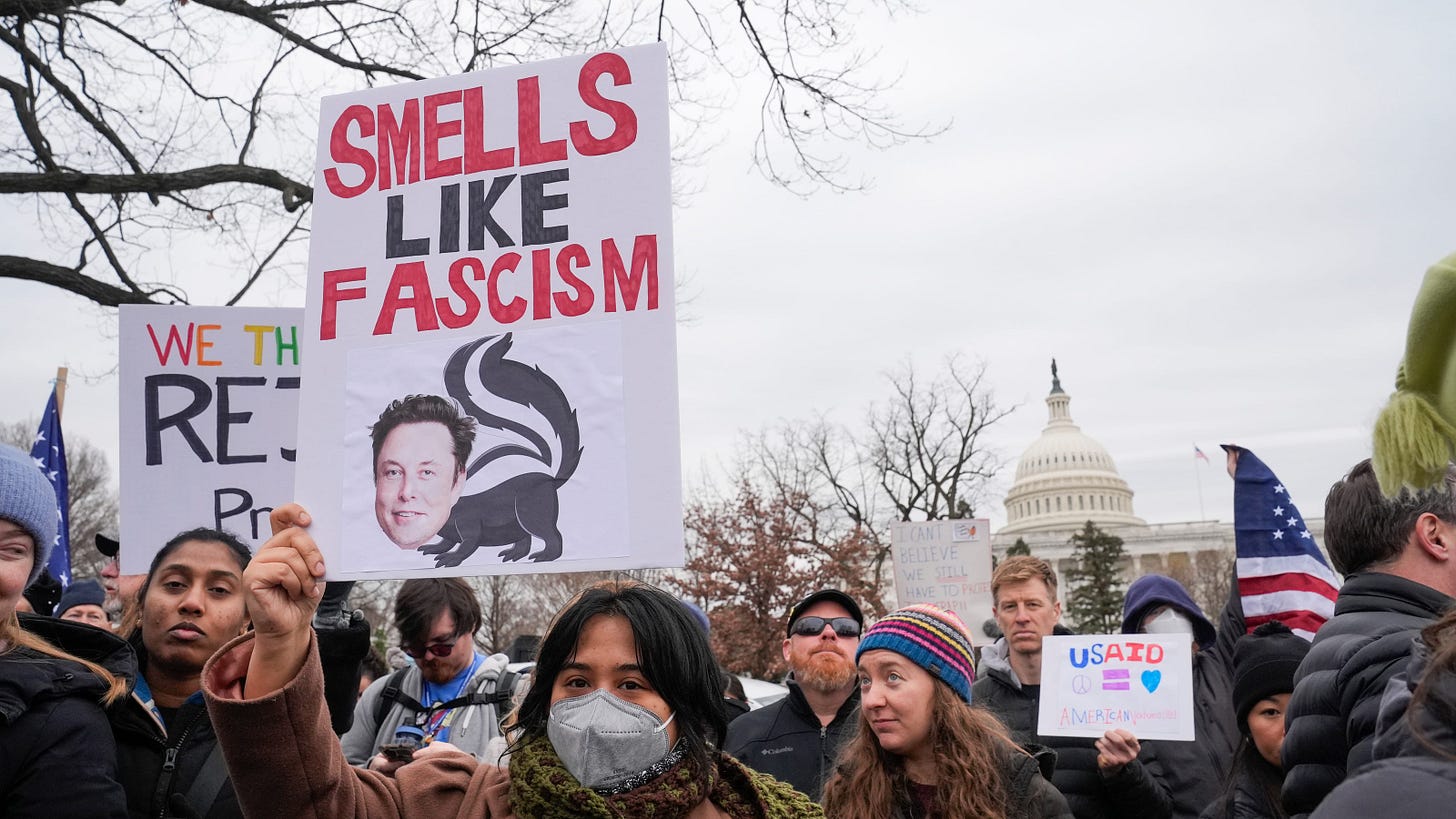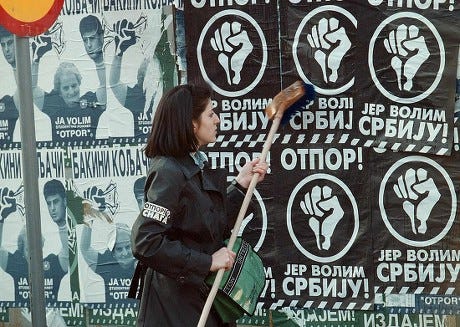By Bruce Watson
Against the assault of laughter nothing can stand. — Mark Twain
BELGRADE — October 1999 — It was just a rusty barrel but it made resistance fun.
Plastered with a caricature of the brutal Slobodan Milošević, the barrel appeared one afternoon on a busy street in Belgrade. A sign above the dictator’s ugly mug read “Smash his face for just a dinar!” From a nearby coffee shop, activists watched as amusement changed to hesitation and hesitation to joy. Within minutes, people terrified of traditional resistance were lining up to smash a dictator’s face. Otpor! (Serbian for “resistance”) had struck again.
Blueprint for Revolution (Random House, 2015) is a book whose time in America has, alas, come. Written by Srjda Popovic, co-founder of the youth-led resistance that ended the Milošević regime, the book is filled with do’s, don’t’s, and inspiring stories from around the world.
From Damascus to the Maldives, from Belgrade to Cairo, resistance crafted or consulted by Otpor! has broken through apathy and doubt to topple one dictator after another. Shouldn’t we be listening?
“My friends and I were not the type of people who could even imagine one day starting a movement,” Popovic writes. “We weren’t aspiring politicians. We were college kids, and we shared the same passions as college kids all over the world: staying up late, drinking a lot, and trying to get a date.”
Yet Otpor! masterfuly guided Serbia in a resistance both clever and effective. The group’s chief weapon was “laughtivism.” “Laughtivism takes your movement beyond mere pranks,” Popovic writes, “because it helps to corrode the very mortar that keeps most dictators in place: fear.”
That barrel was just the start. Otpor! considered activism to be an action movie. “Unless it always moves forward to something bigger and louder and cooler, it will just bore the audience.“
Several Otpor! tactics made Milosevic’s police look more silly than scary. Ping-pong balls, stamped with symbols of resistance, flooded city streets, making cops look comical trying to round them up. White roses, like the one the dictator’s wife always wore, were attached to turkeys let loose, forcing police to chase them down.
“If you’re a cop, you spend a lot of time thinking about how to deal with people who are violent,” Popovic writes. “But nothing in your training prepares you for dealing with people who are funny.“
Oh, but Trump resistance has humor, right? All those signs? Yes, but are they just amusing the converted?
Any successful movement, Popovic writes, must go beyond its base. Critiquing the insular Occupy Wall Street, Popovic notes what could have been. “The distance between ‘We’re a movement for liberal people who want to practice their ideology’ and ‘We’re a movement for people who believe ordinary Americans deserve a break’ isn’t as great as it may seem. While the former is exclusive, the latter will welcome a variety of personalities, interests, and points of view into the fold.“
Along with humor, Popovic sees branding as essential. Hence, one November morning, Belgrade’s Republic Square was filled with stenciled fists. “At the time, when everyone was terrified of Milošević, this gave people the sense that something large and well-organized was lurking just beneath the surface.”
Symbols of resistance create solidarity, and such unity, Popovic insists, must extend to messaging. Otpor’s unifying slogan: “He’s finished.”
“There’s a reason why the FedEx corporation uses the same purple and orange logo on all its planes, trucks, envelopes, forms, polo shirts, and hats. They need to maintain a unified message, and so do you.”
The recent “Hands Off” slogan was a start. But going forward, instead of thousands of activist groups, each with its own signs and symbols, why not a single slogan with a single stark image screaming “No!” to MAGA from sea to shining sea?
Popovic, whose heroes include Gandhi, MLK, and Monty Python, also describes protests that were not amusing, just brilliant. Consider the morning that Damascus awoke to find red dye poured into all city fountains. Red, everyone knew, was the color of the blood spilled by the Assad regime. And police were powerless to remove the dye, whose sad symbolism flowed in fountains for days.
Humor, unity, symbols, and finally timing. Demonstrations, no matter how huge, will simply come and go unless they speak to resistance organized throughout months or years. “A mass demonstration, as anyone who has ever organized any successful campaign will tell you, is the last step you take, not the first.”
But none of this will topple a tyrant unless resistance includes a “vision of tomorrow.” Otpor’s “Declaration of the Future of Serbia” quickly became a bible for the country’s democratic future. And our “vision of tomorrow?” Beyond “Stop MAGA,” what do we offer?
We are not facing a Milošević or Assad — not yet — but we have much to learn from Otpor! Blueprint for Revolution should be in every activist’s library. Isn’t it time, as Ella Baker told her Student Non-violent Coordinating Committee, “to take it to the next level”? o get clever, creative, and unified? And to have fun?
“Believing that change can happen to you, dreaming big and starting small, having a vision of tomorrow, practicing laughtivism, and making oppression backfire: these are the foundations of every successful nonviolent movement.”
Let the wild rumpus start!









